As an Amazon Associate I earn from qualifying purchases.
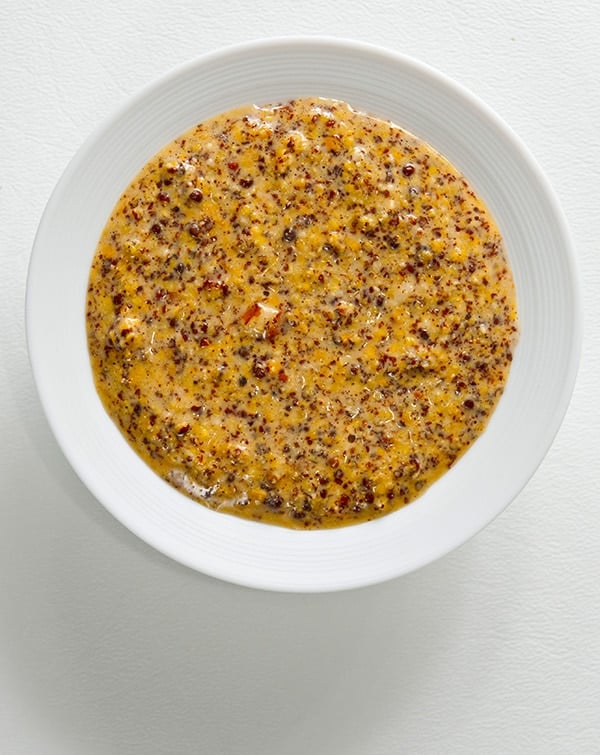
What do you mean you can make mustard at home? It was all I could do not to say, “Uh… how did you think it was made? By mustard elves under a tree?” Instead, I said, “Why yes, and it is really, really easy to make.”
I had this conversation years ago with another food blogger, and I tell you this because for even a food person to not know how to make mustard tells me that it must appear to be magic to most people. But it ain’t. If you have mustard seed and water, you can make mustard.
It’s that easy. And pretty much every culture in the Northern Hemisphere has done so: Mustard is to the North what chiles are to the tropics.
Mustard is a condiment of a thousand faces. Some are smooth, others almost entirely made from barely cracked seeds. Vinegar is often used, but wine, beer, grape must, and even fruit juices are used to moisten the seeds.
Sweetness is usually achieved by adding honey; an American “honey mustard” can be a 1:1 ratio of mustard to honey. A Bavarian sweet mustard, however, uses only sugar and water: no acid, no honey. Italians put fruit preserves in their mustard.
Mustard is one of Europe’s few native spices, although it also has been used in Chinese cooking for around 2,500 years as well. Ancient Rome was quite the hotbed of mustard-making, and it is Rome that gives us our name for mustard: It is a contraction of mustum ardens, or “hot must;” the Romans often added crushed mustard seeds to unfermented crushed grapes.
I’ve recreated a Roman recipe for mustard that uses almonds, pine nuts, mustard seed and red wine vinegar.
The basic idea behind making mustard is this: Grind seeds and add liquid. At its most basic, this is all mustard is. Both Chinese and English mustard (think Coleman’s) is nothing more than water and mustard powder. But there are some things you need to know to make great mustard.
First, you need cold liquid. What gives mustard its bite is a chemical inside the seeds reacting with cool or cold liquid. You also need to break the seeds to get at the fiery chemical — it’s like cutting an onion. Heat damages this reaction, however, so to make a hot mustard use cold water, and warm water for a more mellow mustard.
Mustard sauces lose punch when long-cooked, and should always have a little extra fresh mustard tossed in at the end of cooking.
This reaction is volatile, too. Left alone, your mustard will lose its bite in a few days, or in some cases even hours. But adding an acid, most often vinegar, sets the reaction in place — this is what happens with horseradish as well. Adding salt not only improves the flavor, but also helps preserve the mustard, too.
If you skip the vinegar and salt, you will still have mustard, but it will not keep for long. Not that it will go bad, but it will lose it’s flavor.
Once made with salt and vinegar, mustard is nearly invulnerable to deterioration. Mustard is one of the more powerful anti-microbial plants we know of, and, considering it is mixed with vinegar and salt, it becomes a heady mix no wee beastie can survive in. It is said that mustard will never go bad, although it can dry out.
You have three choices when it comes to which variety of mustard seed you use: White, brown and black. White mustard undergoes a different, milder reaction than do brown mustard or black mustard, which are far zingier. American yellow mustard is made with white mustard seed and turmeric, brown mustards are in most of your better mustards, and black mustard is used in hot mustards or in Indian cuisine.
(Note: You can tame black and brown mustard seeds by soaking them in water overnight before grinding.)
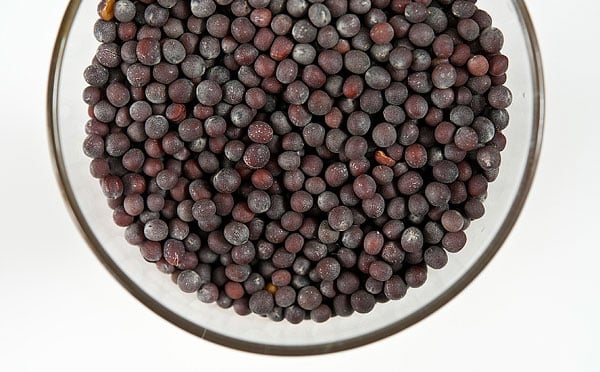
Incidentally, the wild mustard all over California is black mustard. You can thank Father Junipero Serra for that one: He used mustard, which grows like a weed, to mark his travels in Alta California 250 years ago.
The famous Grey Poupon mustard — Dijon has been a center of mustard-making for nearly a millennium now — is traditionally made with stone ground brown mustard and verjus, the tart juice of unripe grapes. I prefer this style of mustard, and most of my homemade mustards are grainy like Dijon. I grind my seeds with a spice grinder, but you could get all old school and use a mortar and pestle.
The best mustards, in my opinion, combine brown or black mustard seeds with yellow mustard powder: The two sets of chemical reactions complement each other and made a more complex mustard.
Always add water or a non-acidic liquid first, let the mixture sit for 10 minutes or so, then add the acid (vinegar, verjus, lemon juice, etc).
Add salt to taste, but it’s typically about 1 to 2 teaspoons per cup of prepared mustard.
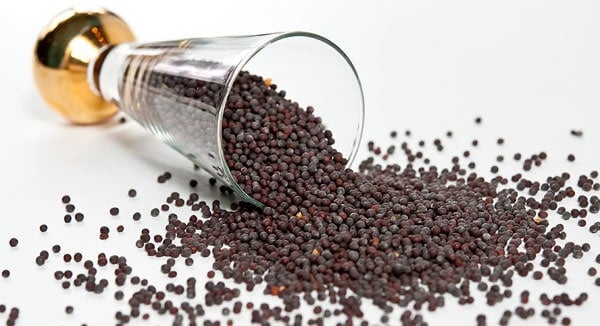
Finally, let your mustard set in the fridge or in a cool place for at least a day before you serve it. Bitterness is a byproduct of the mustard reaction, but that bitterness fades after a day or so. Pure mustards can be kept at room temperature, but mustards with other ingredients, like the Roman nut mustard I mention above, should be kept in the fridge.
So there you have it. Easy-peasy. Now you really have no reason to ever buy mustard again.
Basic Country Mustard
Ingredients
- 6 tablespoons mustard seeds, about 50 grams
- 1/2 cup mustard powder, about 50 grams
- 1/2 cup water or beer
- 3 tablespoons vinegar (cider white wine or sherry)
- 2 teaspoons salt, about 5 grams
- 1 teaspoon ground turmeric (optional)
- 2 tablespoons honey (optional)
- 1/4 cup minced fresh herbs (optional)
Instructions
- Grind the whole mustard seeds for a few seconds in a spice or coffee grinder, or by hand with a mortar and pestle. You want them mostly whole because you are using mustard powder, too.
- Pour the semi-ground seeds into a bowl and add the salt and mustard powder. If using, add one of the optional ingredients, too.
- Pour in the water or beer, then stir well. When everything is incorporated, let this sit for up to 10 minutes. The longer you let it sit, the mellower the mustard will be. When you’re ready, pour in the vinegar.
- Pour into a glass jar and store in the fridge. It will be runny at first. Don’t worry, it will thicken up overnight. Wait at least 12 hours before using. Mustard made this way will last a year in the fridge.
Video
Notes
- Change the liquid and you change the mustard.
- Grind the mustard seeds a lot or a little and you change the texture — or skip the whole seeds altogether and use just mustard powder. Or skip the powder and just use seeds.
- Want herbs in there? Go for it.
- Like honey mustard? Pour some honey in.
- Want your mustard even spicier? Add chiles or freshly grated horseradish.
Nutrition
Nutrition information is automatically calculated, so should only be used as an approximation.

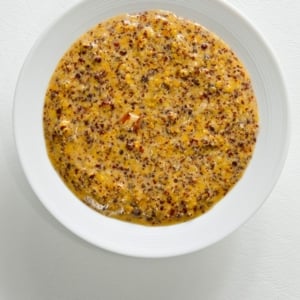
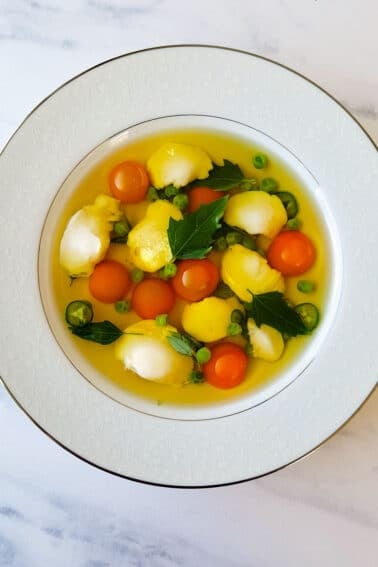
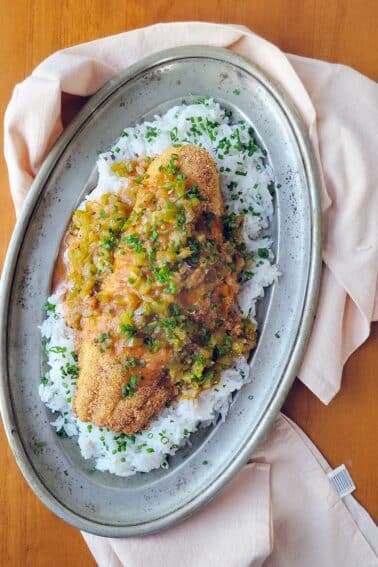
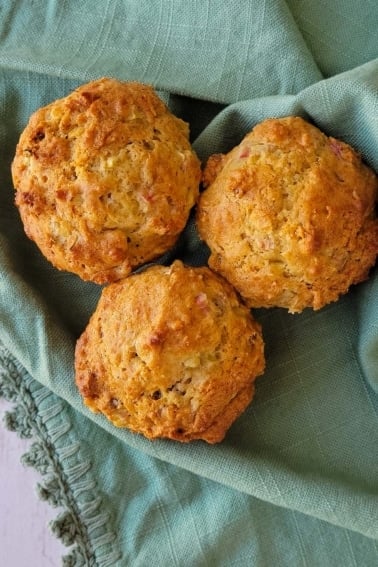

Just wondering…after mixing all the ingredients you say to refrigerate it for 2 days or so. Can this be done without refrigeration, like on the counter at room temperature, or does it have to be cold?
Karen: Pretty sure it will be OK at room temperature. I know the finished mustard is.
Hello Hank! I have a question, I know you mentioned that different liquids will change the flavor, but I was wondering if you substitute the vinegar for lemon juice will it still preserve the mustard for as long? I’m trying to avoid vinegar in my recipes, but i just love mustard and want to continue enjoying it! Thank you in advance.
Danielle: it should. Lemon juice is as acidic as vinegar.
I love to learn about the chemistry of foods – and live your recipes, mustard included.
As I am making kombucha regulary, I want to share a super simple way of using kombucha for mustard. You just cover your mustard seeds (I mixed the yellow with the black) with kombucha in a glas jar. Cover with a mousselin cloth and leave on the kitchen table for 1-2 weeks, depending of the temperature and the acidity. Taste the seeds after a week. When soft and spingy and a nice acid taste, you just blend them and add salt according to taste (and preservation, I guess, if you want to keep it for a longer time). You can mix with honey as well. As vinegar is a fermentation, too, it is just another way of getting the result with pure ingredients. And use your homemade kombucha ?
Thank you for posting this simple easy to follow recipe. It was my first time making mustard and your recipe made it easier.
This is a very clear and comprehensive explanation of how to make your own mustard at home. Also some interesting historical facts. Thanks for posting, Hank.
Super new to this world of making everything for myself. I’m wondering how I could go about preserving mustard if I made it in big batches without using the refrigerator?
Ashley: That’s the great thing about mustard! You don’t need to do anything. It is a preservative. The seeds themselves, as well as the vinegar and salt you put in makes mustard pretty close to indestructible — unless it’s a mustard with a lot of additives, but even in that case, honey and alcohol (wine and beer) are also preservative. I’ve had a jar of homemade mustard live in my pantry a year with no problems.
I’ve been making my own (Dijon style) mustard from a recipe similar to your basic country (white wine and water instead of beer) for a long time and it used to work fine, but the last several batches haven’t seemed to solidify well/liquid separates. Any idea what I could be doing differently or suggestion?
I don’t like most hot foods, but this came out so good, I was really surprised, it was hot but flavorful, I ate it on crackers too. Is there a way to seal the jars for shelf stable until opened to give as gifts?
Love this! I have been making my own homemade mustards for 2+ years now and this is an excellent base starting point! I use many kinds of liquors in mine. I buy the tiny bottles of liquor. Equal amounts of liquor to vinegar. I use our coffee bean grinder to grind the seeds.
I made a double batch of this mustard last night. I may be jumping the gun on this, but, mine is still not as thick as I would like. Does it just need a bit more time? Tried some today, and the flavor profile is incredible! Pungent, spicy and a touch of sweetness.
How would you make cajun mustard?
Looking up a recipe for mustard and look who I found! Can’t wait to try the recipe.
I made the mustard with water & white vinegar. The outcome is very runny & lot strong for our taste, how do tone it down taste-wise & to thicken.
The batch was too hot for our tastes as well, so rather than toss it, I added a bit of water and put it on the stove (low temp) and brought just to a boil. Stirring it constantly, let it bubble for about 30 secs, (add another splash of water if its too thick), and then removed to a bowl to cool. The heating up took out most of the super hot taste. This isn’t a perfect solution as you do sacrifice a bit of the spicy taste but otherwise we would not have eaten it and now its pleasant for us.
So if I’m using all whole seeds and grinding my own (can’t find mustard “powder” anywhere-except what comes in those little spice bottles and that would take entire bottle to make 1/2 cup). Do I use a full 12 tablespoons of seeds ground up (100gms) in the recipe?
Making the mustard was so fun. And taste was incredible, I used beer light ale. Can I can it in a 10min. Water bath like I do my jellies?
Love this recipe! I lightly toasted the yellow mustard seed in a pan before grinding them in the mortar & pestle. Used beer, white wine vinegar & honey. The flavour is amazing. Looking forward to more of your recipes!
Made this to go with Venison Summer Sausage. Turned out great without any optional ingredients. Can’t wait to experiment with additives. Will need to make more sausage!!
Hank, I love your mustard recipe, your duck breast recipe, and you even came through for me when I was trying to brine smelt eggs. I did it, and then thought wait, these are freshwater fish eggs, so I put them in the freezer for a while before I eat them. Which is supposed to kill off all the little slimy things, not the eggs but their occupants.
I have to say one more thing and that is just to urge you to take care of yourself. After your scary illness last year, maybe you will begin to do that? Seems like that was too big big a load you carried this year.
I am so glad I found this site.
I have a question:
I am counting all sugars and carbs, and I am trying to duplicate and improve this wonderful KEY LIME MUSTARD with GINGER product I usually buy in the stores. It is smooth with no visible seeds , and it’s also very mild and a little sweet in flavor.
I looked at the nutritional label, and they use vinegar, sugar, mustard seed, egg yolks, ginger, Key Lime Oil, and Citric Acid.
I’d like to eliminate the sugar and substitute truvia, and I’d also like to eliminate the yolks.
Can you suggest a basic recipe with those substitutions (and possibly improvements)? I’m really having fun learning about mustard and how to cook it.
Thanks,
Tina Herrforth
P.S. Have you ever heard of the Mustard Museum in Wisconsin? I live near it, and it’s a hoot. Got some really goofy fun stuff from the gift shop there years ago. It’s in Mt. Horeb, right outside of Madison.
Hank! Thank you so much for this! I have been looking for days, for my old recipe from years back( using wines, beer and liquor), to no avail! 99% of the other ones all call for using the blender after soaking the seeds, or an immersion blender! I don’t want to use either method! I want to grind the seeds from the beginning, in my coffee grinder; just as you have instructed! But, I wasn’t happy with my first batches; way too thick! So, here you have given us the perfect ratio of dry to liquids! Thanks tons!
I do have an amazing Bavarian recipe that I have already made the herb/spice infused vinegar for! It should be terrific! I don’t have the author’s name in front of me, or I would have shared it! When I find it, I will post then.
I made mustard for the first time. It is pretty hot… It has been in the refrigerator for 1 day. Will it cool down or can I add some vinegar or some other ingredient to it now that will cool it down?
Thanks
Stennis: It will mellow a little over time, but your best bet is to use hot liquid and yellow mustard seeds when you make it if you want a mild mustard.